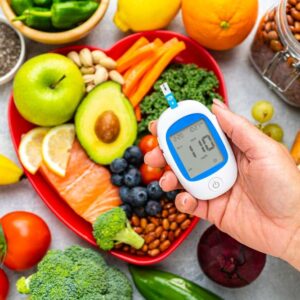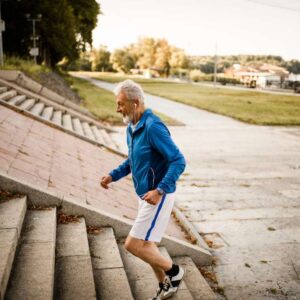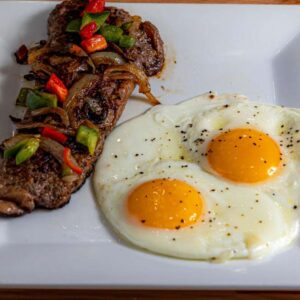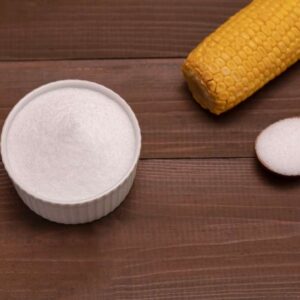
Do This One Simple Thing to Keep Your Joints Younger for Longer
- Discover the age-related changes that make your joints hurt
- This one thing is key to keeping you mobile in your older years. Find out more…
- Three ways to wave goodbye to joint pain and stiffness.
Dear Living Well Daily Reader,
“OOOUUUCCCH! When did getting out of a chair start hurting so much?!?”
A few weeks ago, when I was visiting my family, this is what my dad asked me as he got out of his chair.
Like many folks, my father suffers from joint and muscle stiffness. And while during most of the year he walks about 2–3 miles a day with his loyal walking partner, a dog named Bruce, he’s lucky to get in half a mile during the blazing-hot Florida summer.
It’s in these months that he experiences more pain and stiffness than usual. And as it seems, there is a good reason for this, which I will share in just a bit. Fortunately, there is a solution for my father and anyone else who suffers from chronic joint pain and stiffness.
That’s why we have invited our colleague, Lisa Ball, of Plum Dragon Herbs and Dit Da Jow, to help explain some of the reasons why joint stiffness and pain occur and the best way to help keep your joints younger for longer.
Plus, she will tell you about some amazing, 100 percent natural herbal products that may alleviate joint pain and stiffness.
Take it away, Lisa…
Do This One Simple Thing to Keep Your Joints Younger for Longer
Everyone knows that our bodies change as we age, but what does that look like up close at the joints? And, more importantly, what can we do to keep them younger for longer? We are going to answer these questions for you and tell you about some awesome 100 percent natural herbal products you can use to help heal injuries and pain, and condition joints and connective tissue.
![]() Decreases in Muscle Fibers
Decreases in Muscle Fibers
As you age, there is usually a decrease in the size and number of muscle fibers, especially if you’re sedentary. This causes your remaining muscle tissue to have a slower response time. Almost everyone experiences a noticeable change in their quickness as they approach their 40s and 50s. This puts more stress on the remaining muscle fibers when they try to perform at the same level, and that extra stress raises your risk of strains and pulled muscles.
![]() Lower Cardiac Output
Lower Cardiac Output
The heart’s a muscle too, so when it starts performing at a lower level, less blood is delivered to your muscles and joints for fuel and recovery. You’ll notice that your endurance capacity isn’t what it used to be, and that recovering from strenuous work takes longer. When full recovery takes longer, it’s easier to build up cumulative damage to a point where something tears.
![]() Fluid Loss in Connective Tissues
Fluid Loss in Connective Tissues
At any age, connective tissue has a very low blood supply compared to other tissues, so things like nutrient delivery and recovery time are always fairly slow compared to tissues like muscle and skin.
But as you age, the challenge deepens because there is often an overall loss of water in tendon, ligaments, and cartilage, which makes them lose some of their cushion and flexibility.
This rigidity makes them more vulnerable to stress. So, when you are coming back down from that jump shot in basketball, the Achilles tendon in your heel is not going to provide as much shock-absorbing help and can tear in the process.
Combine lower cardiac output and higher stress, and tendons (which are like fibrous cords that attach muscles to bone) can reach a point where they never have time to fully recover. Damage accumulates until a joint is chronically inflamed.
Ligaments (which connect bone to bone) have an even weaker blood supply than tendons and can be particularly hard to repair when damage accumulates.
Cartilage, which has no blood supply at all, can also suffer the same kind of cumulative damage. Just like ligaments and tendons, it loses its water content, providing less cushion and making it more likely to be damaged when stress is placed on a joint. Constant joint loads can wear it away until signs of arthritis start showing up.
![]() Why Motion and Challenge Are the Answer
Why Motion and Challenge Are the Answer
Physiology experts of all shades, including the American Academy of Orthopedic Surgeons, confirm that the most effective way to slow age-related changes in muscles, ligaments and joints is by remaining active in ways that both stretch and challenge muscles and connective tissue. It’s not just age, but the lack of movement and use of muscles that allow the aging process to speed up.
Even if you’re eating calcium- and vitamin D-rich foods, popping a handful of glucosamine and chondroitin pills and drinking traditional bone broth, you still have to move those joints in order to help all that goodness get to where it can do some good.
Pilates, swimming, yoga and many other forms of exercise that incorporate flexibility simultaneously provide great benefits for joint health. The goal is to keep every part of the joint moving (with appropriate rest in between, of course).
Exercise doesn’t have to be strenuous, but it should be consistent, and it should at least be challenging enough to send the signal to your muscles that they have a reason to stick around.
![]() Liniments Can Extend What Exercise Begins
Liniments Can Extend What Exercise Begins
Certain liniments can have both a healing and conditioning effect on connective tissues and can have dramatic pain-relieving effects:
- If it’s conditioning you’re after, it’s hard to do better than our Ancestors Advanced Dit Da Jow. If you know you need to strengthen a particular area of the body that has been weakened for some time, or if you sustained an injury that has never fully healed, this is the formula for you
- If you’re already dealing with a fresh painful and swollen or bruised injury, Bruise Juice is excellent for helping with the inflammation, redness/bruising and swelling and pain of fresh injuries
- Or, you can get the best of both worlds with Ho Family Dit Da Jow, our best-selling formula known for both its conditioning properties and its ability to reduce pain and accelerate healing from injuries caused by overuse. (Please note this formula is NOT for fresh injuries where bruising and swelling are still present. This formula is best for chronic injury and pain.)
Click here to find out more about the amazing powers of Plum Dragon’s Dit Da Jow!
Lisa Ball
CEO, Plum Dragon Herbs and Dit Da Jow.
As always, check with your doctor before starting a new herbal product.
And let us know if you have used a dit da jow before! Write me at nmoore@lfb.org
Live well,

Natalie Moore
Managing editor, Living Well Daily
Written By Natalie Moore
Natalie Moore is a dedicated health researcher with a passion for finding healthy, natural, and science-based solutions. After a decade of direct healthcare experience in western and natural medicine, she was involved in public health research before joining Living Well Daily.
View More Free Articles
This Sleep Mistake Is Doubling Your Disease Risk
Think your inconsistent bedtime is just a harmless habit? Think again. New research reveals that going to bed at different times each night isn’t just making you tired—it could be dramatically increasing your risk of serious diseases. But the key to making sure poor sleep doesn’t derail your health goals likely isn’t what you think…....
Stop Obsessing Over Diet Trends
Can we stop with the endless diet debates already? Every other week there’s a new headline shouting about which diet is best for weight loss, heart health, or diabetes. Paleo, keto, low-carb, high-protein… it’s exhausting. And now, a new meta-analysis is out comparing the Mediterranean diet, the DASH diet, and something called AHEI (that’s “Alternative...
A New Reason to Ditch Processed Junk
If you’ve ever walked the inside aisles of your local grocery store and thought, “This is all just junk,” your instincts were spot on. A new study published in the journal Thorax just added another red flag to the list of dangers linked to ultra-processed food—a 41 percent higher risk of lung cancer. That’s right....
When Being Winded on Stairs Is Serious (And When It Isn’t)
I had an athlete visit me recently because he experienced shortness of breath while climbing stairs. He is in great shape, so he was worried about what it might mean. “Doc,” he said, “I run five miles three times a week. Why am I huffing and puffing after two flights of stairs?” His concern is...
Study EXPOSES Hidden Danger Lurking in Your Car
We think of our homes and cars as safe havens. But according to a startling new study, they may be flooding your lungs with microscopic plastic particles—every single day. Researchers in France recently found that adults inhale an average of 68,000 microplastic particles daily from indoor air alone. To put that in perspective, that’s about...
Mailbag: Is Modern Food Making You Snore?
“What can cause snoring, and is there a way to correct this issue?” —Seeking Silence Hi Seeking, Snoring happens when the soft tissues in your throat relax and vibrate as air passes through during sleep. While several factors can cause snoring—from sleep position to nasal congestion—I want to share one trigger that might surprise you....
Simple Food Swap SLASHES Dementia Risk 28%
Let’s be honest… who would jump at the chance to cut their dementia risk by 28 percent. And no, you don’t need to run marathons, survive on broccoli, or learn to play the zither (whatever that is) to make it happen. All it takes is one easy swap—something that’s probably already in your refrigerator. Researchers...
This SMART Floss Exposes Hidden Health Danger
Scientists have created dental floss that doesn’t just clean between your teeth—it also tracks your stress while you’re flossing. Now, I know what you’re thinking… “Great—now even flossing is going to stress me out by telling me how stressed I am.” But this fascinating new tool from Tufts University could be a game-changer for understanding...
Is This "Safe" Sweetener Damaging Your Brain?
The headlines are alarming… “Popular Sugar Substitute Linked to Brain Cell Damage” and “Erythritol Could Damage Critical Brain Barrier” are just two of the dozens I’ve spotted recently. But before you toss every sugar-free product in your pantry, let’s take a closer look at what this study actually shows—and what it doesn’t. The latest research...
This Summer Threat Could SPIKE Your Blood Sugar
Picture this… It’s another scorching hot summer day. You crank up the air conditioning while watching the weather forecast, which predicts yet another “record-breaking” heat wave. It’s starting to feel like just another miserably uncomfortable summer. But what you might not realize is that—if you have diabetes—those rising temps could do far more damage to...









